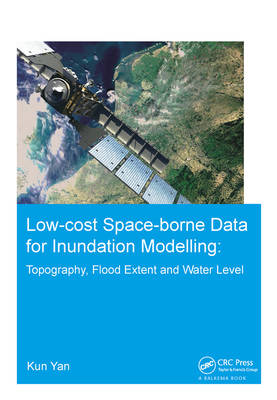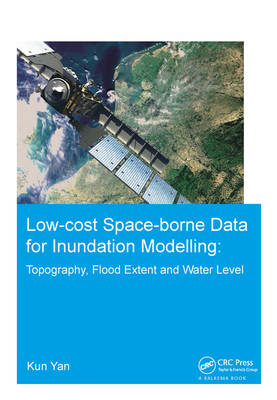
En raison d'une grêve chez bpost, votre commande pourrait être retardée. Vous avez besoin d’un livre rapidement ? Nos magasins vous accueillent à bras ouverts !
- Retrait gratuit dans votre magasin Club
- 7.000.000 titres dans notre catalogue
- Payer en toute sécurité
- Toujours un magasin près de chez vous
En raison de la grêve chez bpost, votre commande pourrait être retardée. Vous avez besoin d’un livre rapidement ? Nos magasins vous accueillent à bras ouverts !
- Retrait gratuit dans votre magasin Club
- 7.000.0000 titres dans notre catalogue
- Payer en toute sécurité
- Toujours un magasin près de chez vous
Low-Cost Space-Borne Data for Inundation Modelling: Topography, Flood Extent and Water Level
Unesco-Ihe PhD Thesis
Kun Yan
148,95 €
+ 297 points
Format
Description
This thesis aims to explore the potential and limitations of low-cost, space-borne data in flood inundation modelling under unavoidable, intrinsic uncertainty. In particular, the potential in supporting hydraulic modelling of floods of: NASA's SRTM (Shuttle Radar Topographic Mission) topographic data, SAR (Synthetic Aperture Radar) satellite imagery of flood extents and radar altimetry of water levels are analyzed in view of inflow and parametric uncertainty. To this end, research work has been carried out by either following a model calibration-evaluation approach or by explicitly considering major sources of uncertainty within a Monte Carlo framework. To generalize our findings, three river reaches with various scales (from medium to large) and topographic characteristics (e.g. valley-filling, two-level embankments, large and flat floodplain) are used as test sites. Lastly, an application of SRTM-based flood modelling of a large river is conducted to highlight the challenges of predictions in ungauged basins. This research indicates the potential and limitations of low-cost, space-borne data in supporting flood inundation modelling under uncertainty, including findings related to the usefulness of these data according to modelling purpose (e.g. re-insurance, planning, design), characteristics of the river and considerations of uncertainty. The upcoming satellite missions, which could potentially impact the way we model flood inundation patters, are also discussed.
Spécifications
Parties prenantes
- Auteur(s) :
- Editeur:
Contenu
- Nombre de pages :
- 134
- Langue:
- Anglais
- Collection :
Caractéristiques
- EAN:
- 9781138373372
- Date de parution :
- 27-09-18
- Format:
- Livre relié
- Format numérique:
- Genaaid
- Dimensions :
- 170 mm x 240 mm
- Poids :
- 409 g

Les avis
Nous publions uniquement les avis qui respectent les conditions requises. Consultez nos conditions pour les avis.






